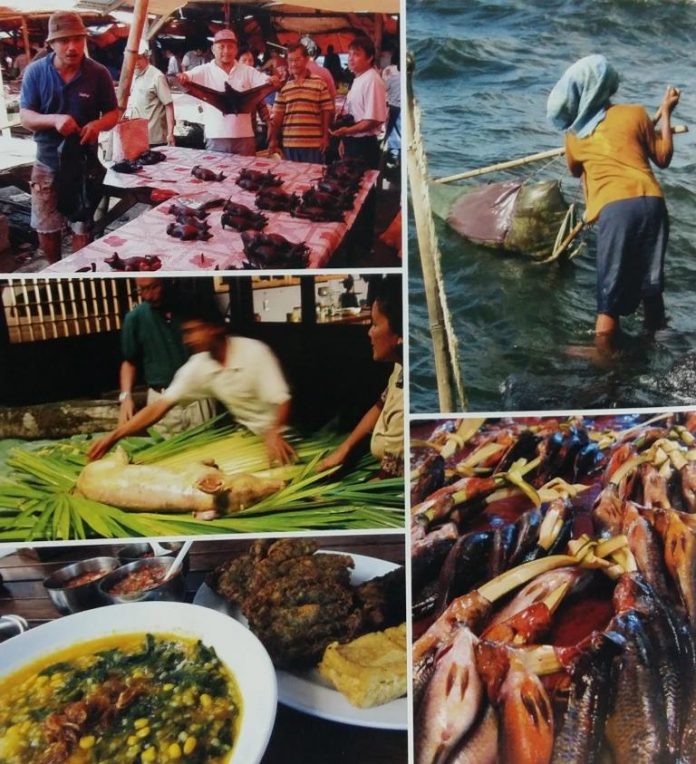A Comparison of Ingredients Padang-Bali-Minahasa
All three regions: Padang, Bali, and Minahasa use cabe (chili – capsicum annum L.) and jahe (ginger – Zingiber of finale). Cabe lempuyangan is used as a spice only in Bali, and imparts a veru distinct aroma and slightly bitter taste to food. The most commonly used spices in Bali, as elsewhere, are chili, shallot, garlic, galangal, turmeric, and candlenut. There is an emphasis on kaempferia galangal (kencur) and on mixed spices used with cabe bun long pepper. Fermented shrimp (terasi/blacan) paste is used for seasoning along with local aromatic herbs.
- Daun kunyit (turmeric leaf – curcurma domestica) is used in Western Sumatera as seasoning, much like Daun Salam, the Indonesian bay leaf.
- Daun Jeruk (kaffir lime leaves – Citrus hystrix), lemon grass and greater galangal are commonly used ingredients in the food of Padang and Manado. Especially in North Sulawesi kaffir lime leaves have a profound effect on the aroma of their cooking.
Pandang food almost always contain coconut milk or grated coconut. North Sumatera is considered the land of the coconut, but the spicy Minahasan food rarely contains coconut milk, using coconut oil instead. Coconut milk is, however, used in traditional pastries containing rice or glutinous rice. The use of coconut milk in Manadonese dishes is more often than not influenced by the culture from Sangit Talaud, an island north of the city of Manado.
Certain edible leaves are used differently in Nothern Sulawesi and Bali. These leaves include belimbing (star fruit leaf), pakis (fern leaf or fiddleheads), young coffee leaf (usually available in coffee plantation regions), carum (small kemangi leaf), basil leaf, green pepper corns, daun kencur (Lesser galingale) and cabe puyang (long grain pepper – Piper retrofractum).
In northern Sulawesi, these leaves are used in cooking for their aromatic flavor. In Bali, they are used for both aromatic and medicinal purposes. There is no official data or research regarding this medicinal usage; all practical aspect are based on traditional beliefs.
“Flavor of Indonesia”. William Wongso’s Culinary Wonders. 2016






